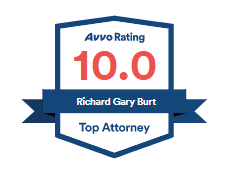In Ahcom, Ltd. v. Smeding, 623 F.3d 1248 (9th Cir. 2010), the U.S. Court of Appeals for the Ninth Circuit decided the question whether a creditor of a corporation that is in bankruptcy has standing to pursue a claim against the corporation’s shareholders on an alter ego theory or whether alter ego claims of creditors belong solely to the corporation’s bankruptcy trustee.
The plaintiff, Ahcom, Ltd., a United Kingdom-based corporation, entered into a contract to buy almonds from a California corporation. The California corporation allegedly failed to deliver the contracted-for almonds. Pursuant to a clause in the contract, Ahcom brought, and prevailed in, a foreign arbitration proceeding against the California corporation.
Ahcom then sued in California state court to collect its arbitration award, but it did not sue the corporation itself, which had petitioned for bankruptcy shortly after losing the arbitration. Instead, Ahcom sued the corporation’s shareholders, the Smedings, alleging an alter ego theory and seeking to pierce the corporate veil to hold the Smedings liable for a claim related to the foreign arbitration award and for a breach of contract claim. Aside from the alter ego theory, Ahcom had no claim against the Smedings.
The Smedings removed the matter to federal court and attacked Ahcom’s alter ego theory. They argued that Ahcom was asserting a claim of harm not just to Ahcom alone but to all creditors and thus that claim was exclusively the property of the trustee in bankruptcy. The district court agreed and dismissed Ahcom’s complaint without leave to amend. The court of appeals reversed.
The court of appeals noted that a Chapter 11 bankruptcy trustee stands in the shoes of a debtor corporation and has standing to bring any suit that the debtor corporation could have brought had it not petitioned for bankruptcy. When the trustee has standing to assert a debtor’s claim, that standing is exclusive and divests all creditors of the power to bring the claim. But that standing is limited. The trustee may assert only claims belonging to the debtor corporation and has no standing generally to sue third parties on behalf of the estate’s creditors. Although federal bankruptcy law governs the bankruptcy proceeding, state law determines whether a claim belongs to the trustee or to the creditor, and, in this case, the parties agreed that California law applied.
The court of appeals noted case law to the effect that there is no such thing as a substantive alter ego claim, that an alter ego claim is procedural in nature. In Mesler v. Bragg Management Co., (1985) 39 Cal. 3d 290, which the court cited, the California Supreme Court was in unanimous agreement that a finding of alter ego for the purpose of a particular action does not mean that the corporate veil will be pierced as to all suits or creditors for all purposes.
Notwithstanding Mesler and other precedent, the Smedings argued that Stodd v. Goldberger, (1977) 73 Cal. App. 3d 827, created a “general alter ego claim” that a trustee in bankruptcy can assert on behalf of all creditors, relying on Bank of Maui v. Estate Analysis, Inc., 904 F.2d 470 (9th Cir. 1990), a bankruptcy appellate panel decision and on a bankruptcy court opinion in Davey Roofing, 167 B.R. 604, 608 (Bankr. C.D. Cal. 1994). Those cases had relied on Stodd, but the court of appeals ruled that they had misread Stodd.
The court of appeals read Stodd as applying only where the corporation suffered a distinct injury to its own assets, such as through fraudulent conveyance, conversion, or theft by a shareholder, not that a trustee in bankruptcy would have standing to assert a free-standing general alter ego claim that would require a shareholder to be liable for all of a company’s debts. The court of appeals concluded that California law does not recognize a claim that would allow a corporation and its shareholders to be treated as alter egos for purposes of all the corporation’s debts and that the trustee in bankruptcy could not bring such a claim against the Smedings under California law. As a result, the creditor was not precluded by the bankruptcy of the corporation from pursuing its alter ego claim against the Smedings.
Comment
The holding in Ahcom will eliminate a theory that had the potential (realized in some cases) for much mischief. There were cases in which a shareholder of a bankrupt corporation purchased the alter ego claim from the bankruptcy trustee for a fraction of the face amount of the unsecured claims but for more than any one individual creditor was willing to pay. As a result, creditors with just claims were deprived of the ability to pursue their claims in court and often received nothing or next to nothing from the bankruptcy estate. Treating the alter ego claim of creditors against shareholders as a corporate asset belonging to the estate and allowing a shareholder to purchase the claim allowed shareholders of insolvent corporations to perpetuate the injustice that the alter ego theory seeks to prevent.
On the other hand, creditors of insolvent corporations may find this decision unwelcome if they have claims that are too small to make them economically worthwhile to pursue individually but which would be valuable to the trustee in the aggregate.
Ultimately, however, the correctness of the decision must be judged not by who stands to benefit but by its consistency with the body of law of which it is a part, and by this standard, the court’s holding in Ahcom is correct.




